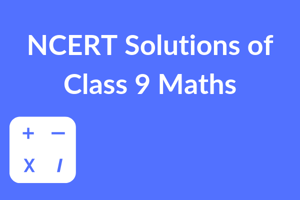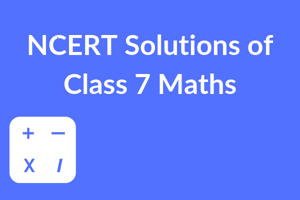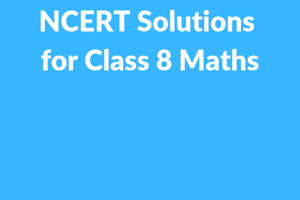The 9th class marks the beginning of an important phase in every student’s life. 9th and 10th...
10th Standard Maths CBSE Updated Chapters & Syllabus 2020-2021
The 10th class is an important milestone in one’s educational journey. It is often a turning point in one’s education and also plays a vital role in deciding one’s future career. Class 10 maths, in particular, has a very important space in the entire high school studies. 10th standard math prepares students for the complex questions that they will be introduced to in high school.
10th standard maths is also very important as it lay a deep focus on the important chapters and concepts that students have studied only briefly in the previous classes. Apart from going into detail with the previous concepts, it also introduces students to some new ones.
Similar to the 9th class maths syllabus, the class 10 math syllabus is also divided into units. The class 10 maths question paper will have questions from 7 different units of mathematics. These units contain a varied number of chapters pertaining to the category of the unit. The 7 units in the class 10 maths are as follows:
Unit I – Number system
Unit II – Algebra
Unit III – Coordinate Geometry
Unit IV – Geometry
Unit V – Trigonometry
Unit VI – Mensuration
Unit VII – Statistics and probability
Before having a brief view of the individual units, chapters they contain, and the topics studied in each chapter, let us give a quick glance at the marking scheme for 10th standard maths. According to CBSE, each unit in class 10 math has been given some weightage in terms of marks in the class 10 maths question paper. The marks weightage for each unit is different.
Unit I – Number system has the weightage of 6 marks, Unit II – Algebra has the weightage of 20 marks, Unit III – coordinate geometry has the weightage of 6 marks, Unit IV – Geometry has the weightage of 15 marks, Unit V – Trigonometry has the weightage of 12 marks, Unit VI – Mensuration has the weightage of 10 marks, and Unit VII – Statistics and probability has the weightage of 11 marks.
Having discussed the marks-wise weightage of each unit, let us now look at the syllabus of class 10 math in a more precise way. Following is a brief analysis of each unit with the chapters and topics covered in them.
The overall course structure of class 10 maths is very similar to class 9 maths. Even, the units are the same, but more topics are added and more complex problems are thrown at students for the concepts which they have already studied in the 9th class maths syllabus. There is one additional unit in class 10th as compared to class 9th. This unit is trigonometry and will be introduced to students as an important part of mathematics.
Blog Contents
Unit I – Number System
The first unit, Number system in 10th standard maths contains only one chapter that is Real Numbers. This chapter studies the following topics:
- Fundamental Theorem of Arithmetic
- Problem-solving and illustrating and motivating through examples
- Proofs of the irrationality of the square root of 2, square root of 3, and the square root of 5.
- Terminating/non-terminating recurring decimals
- The decimal representation of rational numbers as terminating, non-terminating recurring decimals.
Unit II – Algebra
When we closely look at the marks- wise weightage of the class 10 math syllabus, we’ll realize that maximum weightage is given to the second unit, Algebra. Hence, this is undoubtedly one of the most important parts of the 10th grade maths syllabus. This second unit contains four chapters. Let us look at the topics covered in each of these chapters.
Polynomial
In addition to the previous concepts and knowledge of polynomials as studied in class 9th, this chapter will have more complex questions. Two main topics covered here are:
- Zeros of a polynomial
- Relationship between zeros and coefficients of quadratic polynomials.
Pair of Linear Equations in Two Variables
In this chapter of ncert 10th class, students will recall the previous knowledge of linear equations in one variable and two variables. In the last grade, they studied linear equations in two variables, here, they’ll study pair of linear equations in two variables. The main topics covered here are:
- Introduction to the Pair of linear equations in two variables
- Graphical method of their solution
- Checking the consistency/inconsistency of the pair of equations
- Algebraic conditions for the number of solutions
- Substitution and elimination method to find the solution of a pair of linear equations in two variables algebraically
- Simple situational problems
- Simple problems on equations reducible to linear equations
Quadratic Equations
This is the fourth chapter in the NCERT math book class 10. This chapter deals with quadratic equations and their solutions. The main topics covered are:
- Introduction to the standard form of a quadratic equation that is, ax2 + bx + c = 0, (a ≠ 0)
- Solutions of quadratic equations (only real roots) by factorization
- Solutions of quadratic equations by using the quadratic formula
- Relationship between discriminant and nature of roots.
Arithmetic Progressions
The Arithmetic progression is a very interesting chapter in 10th grade maths. This helps students in understanding arithmetic and motivates them to study the arithmetic progressions. It focusses on finding the nth term and sum of the first n terms of an A.P.
Unit III – Coordinate Geometry
The third unit in NCERT math book class 10 is about the coordinate geometry. In the previous class, students learn some basic concepts about coordinate geometry and how to place the coordinates on a graph or line. Here, they’ll revise those concepts and also learn:
- Graphs of linear equations
- Distance formula
- Section formula (internal division)
Unit IV – Geometry
The fourth unit of class 10 maths is Geometry. This unit has three chapters namely, triangles, circles, and constructions. Students have studied these in the previous class. Here, along with revising the old concepts, they will learn some new topics in these chapters. The topics covered in each chapter are as mentioned below.
Triangles
It basically contains motivates and proofs along with some definitions and examples. The motivates and proves in the chapter are as follows:
- (Prove) If a line is drawn parallel to one side of a triangle to intersect the other two sides in distinct points, the other two sides are divided in the same ratio.
- (Motivate) If a line divides two sides of a triangle in the same ratio, the line is parallel to the third side.
- (Motivate) If in two triangles, the corresponding angles are equal, their corresponding sides are proportional and the triangles are similar.
- (Motivate) If the corresponding sides of two triangles are proportional, their corresponding angles are equal and the two triangles are similar.
- (Motivate) If one angle of a triangle is equal to one angle of another triangle and the sides including these angles are proportional, the two triangles are similar.
- (Motivate) If a perpendicular is drawn from the vertex of the right angle of a right triangle to the hypotenuse, the triangles on each side of the perpendicular are similar to the whole triangle and to each other.
- (Prove) In a right triangle, the square on the hypotenuse is equal to the sum of the squares on the other two sides.
Circles
It basically contains proofs along with some definitions and examples. The motivates and proves in the chapter are as follows:
- Tangent to a circle
- (Prove) The tangent at any point of a circle is perpendicular to the radius through the point of contact.
- (Prove) The lengths of tangents drawn from an external point to a circle are equal.
Constructions
As studied earlier, this is a practical-based chapter. As in the previous class, students learn drawing various angles without using a protractor, here they will learn:
- Division of a line segment in a given ratio (internally).
- Tangents to a circle from a point outside it.
Unit V – Trigonometry
The sixth unit of class 10 math is trigonometry. This is a new and very important part of the class 10 maths syllabus. It contains three chapters. The topics covered in each of the three chapters are mentioned below.
Introduction to Trigonometry
Here, students will get an introduction to the trigonometry along with some basic concepts. The main topics covered in this chapter are:
- Trigonometric ratios of an acute angle of a right-angled triangle.
- Proof of their existence (well defined).
- Values (with proofs) of the trigonometric ratios of 30 degrees, 45 degrees, and 60 degrees. Relationships between the ratios.
Trigonometric Identities
Following the introduction chapter is the chapter that studies about the trigonometric identities. These are very important identities that students will use even in higher classes for solving complex trigonometry problems. The main topic covered in this chapter is about the proof and applications of the identity sin2A + cos2A = 1.
Heights and Distances: Angle of elevation, Angle of Depression
This is the third chapter in the trigonometry unit in class 10 maths. This chapter focusses on the following topics:
- Simple problems on heights and distances.
- Problems should not involve more than two right triangles.
- Angles of elevation/depression should be only 30 degrees, 45 degrees, 60 degrees.
Unit VI – Mensuration
Similar to the previous class, the menstruation unit in 10th standard maths areas, surface areas, and volumes. However, it does have some additional concepts and complex problems. It contains two chapters and the following are the topics covered in each of them.
Areas Related to Circles
- Motivate the area of a circle
- Area of sectors and segments of a circle
- Problems based on areas and perimeter/circumference of the plane figures
Surface Areas and Volumes
This chapter is very concise and highly focusses. The first main topic discusses the concepts and questions of the surface areas and volumes of combinations of any two of the following: cubes, cuboids, spheres, hemispheres, and right circular cylinders/cones. The second part focusses on the problems involving converting one type of metallic solid into another and other mixed problems
Unit VII – Statistics and Probability
The first chapter in this unit VII of the class 10 math syllabus, statistics, contains the following main topics: Mean, median, and mode of grouped data. The second chapter that is about probability contains topics including the classical definition of probability and simple problems on finding the probability of an event.
.png?width=100&height=100&name=Kapdec%20Logo%20(400px).png)


